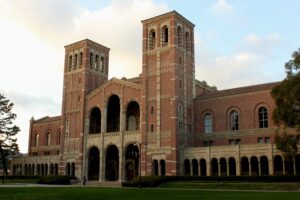
The California housing crisis has been an increasing issue for college students over recent years, COVID-19 being only one of the many problems. The California housing crisis continues with students struggling to find safe and affordable housing, especially in larger cities like Los Angeles. The University has been putting in the effort to keep all their students housed and was the first UC campus to guarantee housing to their students for four years. As part of their commitment to ensure UCLA can house all their students, they proposed a plan for a budget friendly dorm specifically for low-income students.
The aforementioned plan would include demolishing a 100 student capacity apartment building, which was built in 1981, to construct a new dorm building that could house 545 students, setting aside at least 350 of these spaces for low income students and charging only $600 per student per month, something that is desperately needed and worth the drawbacks.
The dorms in this building were set to be built with three beds, desks, closets along with storage space and a refrigerator all within 265 square feet. While this is not the most ideal amount of space, along with the three person room, students will also have access to communal bathrooms, study lounges and kitchen space within the building. It should also be taken into account that the students this building is being allocated for will likely have to choose between this housing option or homelessness for the school year.
Students at universities across California, both community colleges and four-year universities, have had to resort to living in their cars, hotel rooms or on friends’ couches. A three person bedroom with shared bathrooms and kitchens is far better for these students than having to sleep in a car, shower at the public gym and rely on fast food for nutrition. For students who can afford more expensive housing and would like more space, there are still other options for on campus housing. While low income students shouldn’t be penalized this way, there is yet to be another alternative.
The pushback to this plan comes from the UC Board of Regents, whose job it is to approve or block projects like this on UC campuses. In statements after the vote rejecting the plan, some regents expressed concerns about the mental health of the students who will be living in these spaces on campus. However, when comparing the only alternative for the students who would be living in these rooms, their mental health would probably suffer far worse in nonexistent living spaces. As opposed to living on the streets, going from place to place, motels or in their cars, these rooms would at least provide safety, an actual bed and necessities for personal hygiene. Despite their concerns for the students’ mental health, they don’t seem to have proposed any alternative solutions for the housing issue as they turned down this proposal. At the very least, the Board of Regents should consider modifying this plan to house, at least, more than 100 students.
The regents making this decision also happen to earn, on average, over 500k a year, which calls into question whether or not they are the best people to be making a decision on this project without gathering the opinions of the students who need them. The regents are likely looking for the living spaces to be a pleasant and comfortable living situation for students, when what they really need to be asking is “will this be a safe and functional living space, with access to the amenities that students need.” The answer to the latter would be a clear “yes.” The dorm spaces proposed are not only secure places to sleep, but provide space for students to receive adequate nutrition, keep up their hygiene and provide comfortable study spaces, all of which are far better than having nothing.







